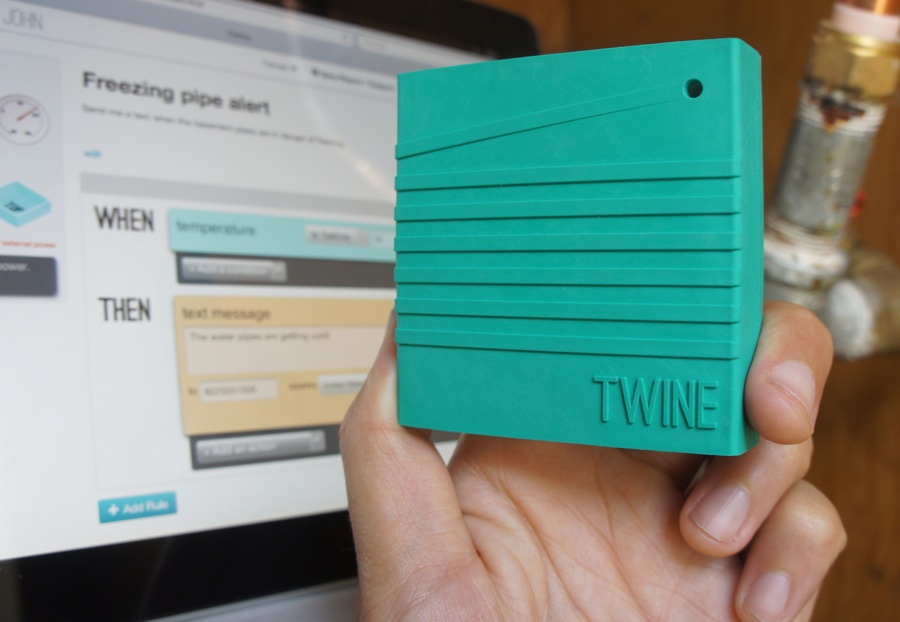
Twine got its start two years ago thanks to the imagination of two MIT Media Lab graduates, John Kestner and David Carr. The duo were able to raise $500,000 on crowdsourcing site Kickstarter for their device which promised to make any item in the house an internet connected interactive smart product. Twine is now ready for purchase and it seems that the Twine team has developed the product that they set out to bring to the masses.
The ambitious nature of Twine means that the product needs to be intuitive enough for any type of user to understand and use. The team has solved this issue by focusing on product design. According to Kestner, his team “wanted to wrap the functionality in something that didn’t read as an electronic object.” That is why the Twine team packed the small rectangular device full of sensors on the inside and a very non-techie exterior. Kestner adds that, “It’s just a solid chunk of connectivity. We settled on elastomer [for the outer case]–it feels great to the touch, and reads as durable, friendly, and decidedly non-electronic.” Setup is just as straightforward and the bottom of the device has only two instructions that read: “Place this side up,” and “go to Twinesetup.com.”
Twine does not come with any instructions because the device is open-ended and the owner is expected to figure how they want to use the device. For example, if someone has pipes in the basement that can freeze in cold weather, Twine can send a message to the home owner if the temperature falls below freezing in the basement. Similar sort of functionality can be created through an internet dashboard where users set up “rules”. These simple programs can be used to develop many creative uses for the device and the forums for Twine are filling up with people doing just that.
Source: Fast Co Design
Photo: Supermechanical